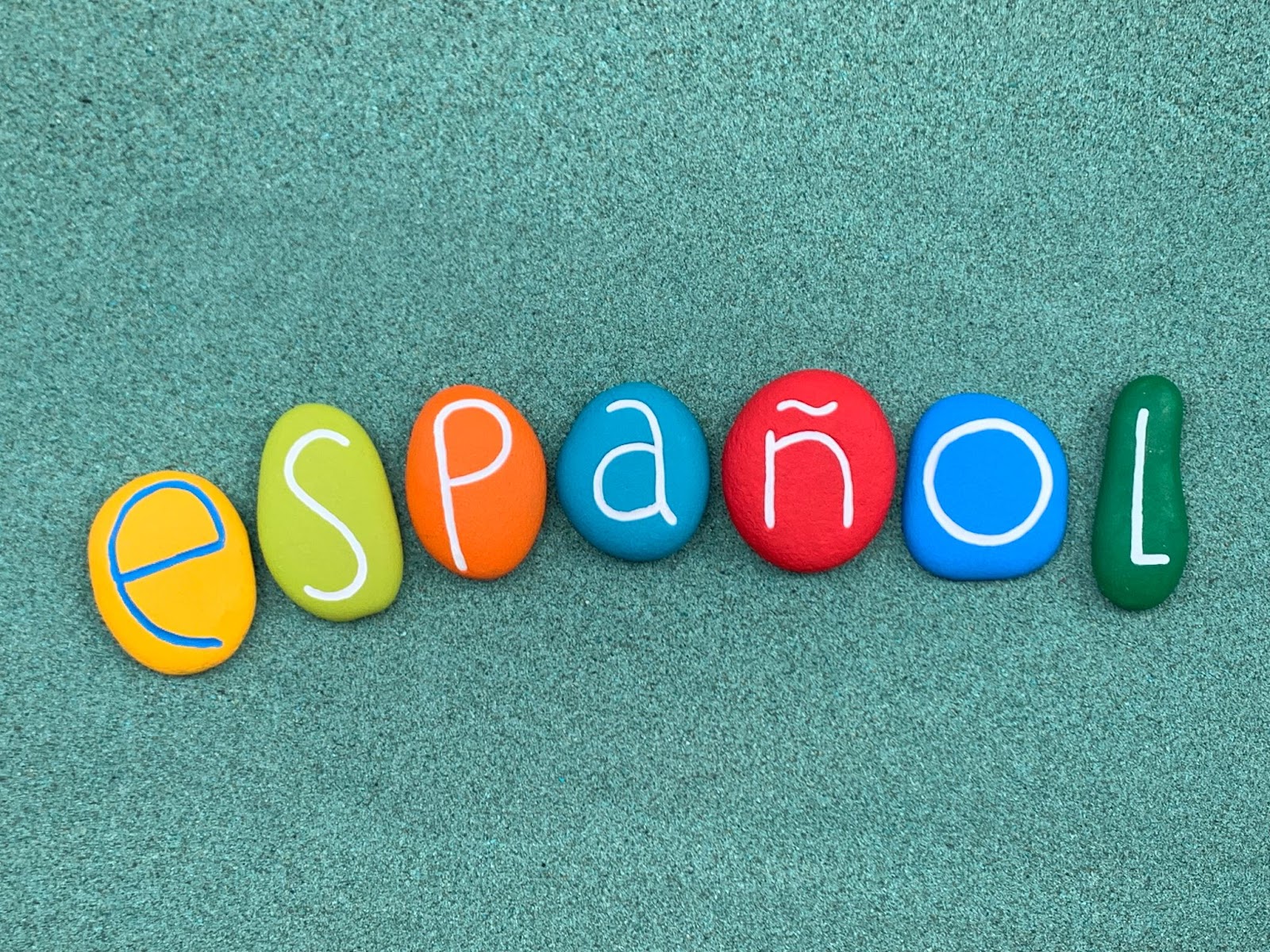
Struggling with estoy vs soy? You're not alone. This distinction trips up many English speakers learning Spanish because both translate to "I am," but they serve completely different purposes. In short, this is how they differ:
"Soy" comes from the verb "ser" and describes who you are at your core—your identity, permanent characteristics, and essential nature. When you say "Soy profesor," you're telling someone about your profession, a fundamental part of who you are.
"Estoy," from the verb "estar," expresses your temporary states and conditions. Saying "Estoy cansado" means you're tired right now, not that being tired defines you as a person.
This difference matters because English uses just one verb ("to be") for both concepts. In Spanish, using the wrong one can completely change your meaning. Mastering when to use "estoy" versus "soy" will help you speak more naturally and avoid common mistakes that might confuse native speakers or unintentionally change your message.
I am (soy) when describing who I am at my core. I am (estoy) when talking about how I feel right now.
Think of it this way: "Soy" reveals my identity—my permanent characteristics, profession, and essential nature. When I say "Soy escritor" (I am a writer), I'm telling you about my occupation, something fundamental to who I am.
Meanwhile, "estoy" captures my temporary states. When I tell you "Estoy cansado" (I'm tired), I'm sharing my current condition, not a permanent trait. Tomorrow, I might be energetic instead!
The difference? "Soy" defines me. "Estoy" describes my passing circumstances.
| Verb | First Person Singular | Second Person Singular | Third Person Singular | First Person Plural | Second Person Plural | Third Person Plural |
| Ser | Yo soy | Usted es/Tu eres | El-Ella es | Nosotros somos | Ustedes son/ Vosotros sois | Ellos-Ellas son |
| Estar | Yo estoy | Usted está/ Tu estás | El-Ella está | Nosotros estamos | Ustedes están/ Vosotros estáis | Ellos-Ellas están |
For English speakers, the challenge of soy and estoy lies in the fact that English uses a single verb, "to be," to express both permanent and temporary states. In Spanish, however, these concepts are split between ser (soy) for permanent qualities and estar (estoy) for temporary conditions. This distinction requires learners to think differently about how they describe themselves and the world around them.
The subtlety of the differences adds another level of complexity. "Soy feliz" (I am a happy person), for instance, suggests that happiness is a constant quality, whereas "Estoy feliz" (I am happy) expresses a momentary feeling. For English speakers, who are used to depending on context rather than verb choice to express such meanings, these nuances are not intuitive.
As a result, mastering this aspect of Spanish grammar demands practice, attention to detail, and a willingness to rethink how "to be" is used in different situations.

In Spanish, soy is used to describe permanent characteristics or aspects of your identity. This includes physical attributes, profession, nationality, and personality traits. Here are some examples of when to use soy:
Physical Attributes: Use soy to describe permanent physical qualities like height or age.
Profession or Occupation: Soy is used to state your job or profession.
Nationality or Origin: Use soy to express your nationality or where you are from.
Personality Traits: Soy can describe inherent personality characteristics.
Here are some examples of how to use yo soy in sentences:
| Spanish | English |
| Yo soy ingeniero. | I am an engineer. |
| Yo soy estadounidense. | I am American. |
| Yo soy alto y delgado | I am tall and thin. |
| Yo soy una persona amable. | I am a kind person. |
Soy de/del: This phrase is used to indicate where you are from.
Estoy is used to describe temporary states or conditions. This includes emotions, physical locations, and actions that are currently happening. Here are some examples of when to use estoy:
Emotions and Feelings: Use estoy to express how you feel at the moment.
Physical Location: Estoy is used to indicate where you are at the moment.
Actions in Progress: Use estoy to describe actions that are happening now.
Here are some examples of how to use yo estoy in sentences:
| Spanish | English |
| Yo estoy en la playa. | I am at the beach. |
| Yo estoy estudiando para un examen. | I am studying for an exam. |
| Yo estoy muy contento hoy. | I am very happy today. |
| Yo estoy comiendo una manzana. | I am eating an apple. |
Estoy en: This phrase is used to indicate your current location.
Using soy versus estoy with the same adjective can significantly change the meaning of a sentence. This distinction is crucial for delivering the desired message and understanding the nuances of communication in Spanish.
Here are some examples that illustrate how the same adjective can have different meanings depending on whether soy or estoy is used:
| Adjective | Soy (Ser) | Estoy (Estar) |
| Feliz | Soy feliz (I am a happy person) | Estoy feliz (I am happy right now) |
| Cansado | Soy cansado (This is not typically used; instead, "soy una persona cansada" implies a general tendency) | Estoy cansado (I am tired right now) |
The choice between ser and estar goes beyond grammar—it reflects subtle cultural nuances in Spanish-speaking societies. For example:
To better understand how ser and estar work in Spanish, let's look at their conjugations in the present simple, present continuous, and present perfect tenses. This will help clarify how to use soy and estoy effectively.
| Verb | First Person Singular | Second Person Singular | Third Person Singular | First Person Plural | Second Person Plural | Third Person Plural |
| Ser | Yo soy | Usted es/Tu eres | El-Ella es | Nosotros somos | Ustedes son/ Vosotros sois | Ellos-Ellas son |
| Estar | Yo estoy | Usted está/ Tu estás | El-Ella está | Nosotros estamos | Ustedes están/ Vosotros estáis | Ellos-Ellas están |
The present continuous in Spanish is formed using estar + the gerund of the main verb. For ser, there is no direct equivalent in the present continuous, as it typically describes permanent states.
| Verb | First Person Singular | Second Person Singular | Third Person Singular | First Person Plural | Second Person Plural | Third Person Plural |
| Estar + Gerund | Yo estoy jugando | Usted está/ Tu jugando | El-Ella está jugando | Nosotros estamos jugando | Ustedes están/ Vosotros estáis jugando | Ellos-Ellas están jugando |
The present perfect is formed using he (from haber) + the past participle of the verb. For both ser and estar, the present perfect is used similarly, but ser is less common in this tense.
| Verb | First Person Singular | Second Person Singular | Third Person Singular | First Person Plural | Second Person Plural | Third Person Plural |
| Ser | Yo he sido | Usted ha sido/Tu has sido | El-Ella ha sido | Nosotros hemos sido | Ustedes han sido/ Vosotros habéis sido | Ellos-Ellas ha sido |
| Estar | Yo he estado | Usted ha estado/ Tu has estado | El-Ella ha estado | Nosotros hemos estado | Ustedes han estado/ Vosotros habéis estado | Ellos-Ellas han estado |

Understanding the difference between ser and estar is essential as you delve into the nuances of Spanish, but it's not always easy. When translating from English, even experienced learners may become caught up in a maze of misunderstandings. The complexity arises not just from the grammar itself, but from the subtle implications these verbs carry in everyday conversation. Here are some common mistakes and how to avoid them.
Direct English Translation: One of the most common mistakes is translating directly from English without considering the permanent/temporary distinction.
Misunderstanding the Permanent/Temporary Rule: Sometimes, learners struggle to apply the rule consistently.
| Sentence | Incorrect translation | Correct translation |
| I am tired | Soy cansado | Estoy cansado |
| I am in Italy | Soy en Italia | Estoy en Italia |
| I am sad today | Soy triste hoy | Estoy triste hoy |
Mastering the difference between soy and estoy can be challenging, but using mnemonic devices can make it easier. Here are some practical tricks to help you remember when to use each verb:
The PLACE rule is a helpful mnemonic for remembering when to use estoy (from estar). Each letter in PLACE corresponds to a situation where you would use estar:
P: Position "Estoy detrás del árbol" – I am behind the tree
L: Location "Estoy en Madrid" – I am in Madrid
A: Action "Estoy estudiando" – I am studying
C: Condition "Estoy cansado" – I am tired
E: Emotion "Estoy feliz" – I am happy
For ser, the DOCTOR rule can be useful, though it's less commonly applied. Each letter can stand for a category where ser is used:
D: Date "La fiesta es el viernes" – The party is on Friday
O: Occupation "Soy ingeniero" – I am an engineer
C: Characteristics "Soy alto" – I am tall
T: Time "Son las seis" – It's six o'clock
O: Origin "Soy de España" – I am from Spain
R: Relation "Soy el padre de Juan" – I am Juan's father
Another way to think about it is to consider ser as describing "what" something is (permanent qualities) and estar as describing "how" something is (temporary states). For example:
| Sentence | Traduction | Description | Question |
| Soy inteligente | I am intelligent | A permanent trait | What are you? |
| Estoy cansado | I am tired | A temporary state | How are you? |
To sum up, knowing the distinction between estoy and soy is crucial for proficient Spanish communication. Both of these verbs translate to "to be," although they have different meanings. They are versions of the verbs estar and ser, respectively. Soy is used to characterize traits that are permanent or inherent, including physical attributes, vocation, or nationality. Estoy, on the other hand, is used for temporary or changing situations such as feelings, places, or ongoing activities.
Spanish requires understanding this distinction. Because Spanish demands a decision between ser and estar, whereas English utilizes a single verb "to be" for both permanent and transitory states, English speakers frequently struggle. Mnemonic methods such as the DOCTOR rule for ser and the PLACE rule for estar (Position, Location, Action, Condition, Emotion) can help people remember the distinction. Additionally, the distinction can become more intuitive by emphasizing context and practicing frequently with real-world situations.
Last but not least, using tools like language learning applications, classes, and language exchange websites can help you solidify your learning by offering helpful practice and feedback. You will improve your overall Spanish language skills by using estoy and soy appropriately with regular practice and exposure to real-life discussions. Your ability to speak successfully in Spanish will increase if you set aside time for practice and make use of the resources at your disposal.